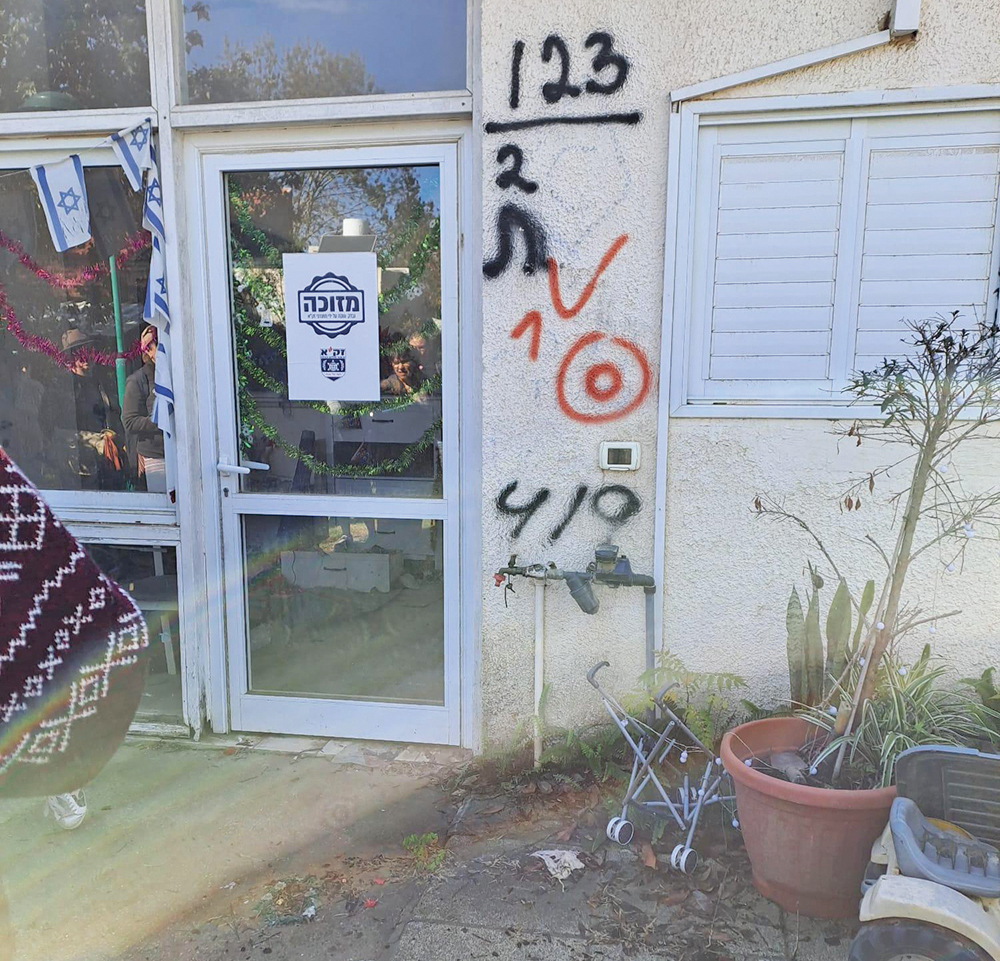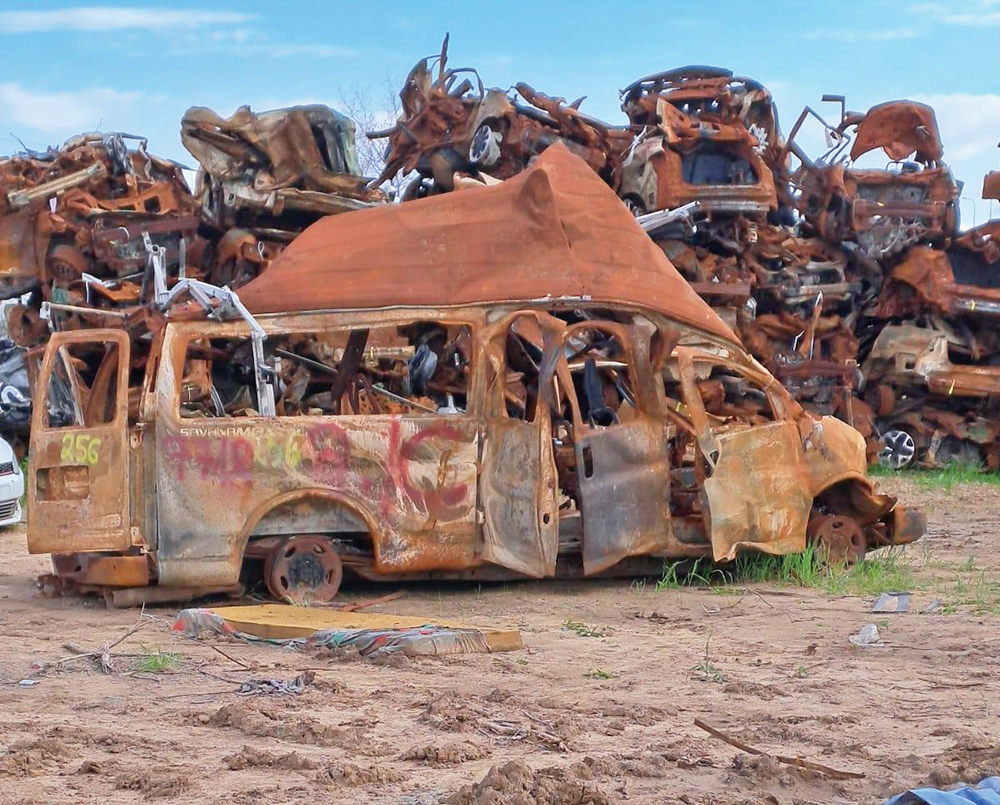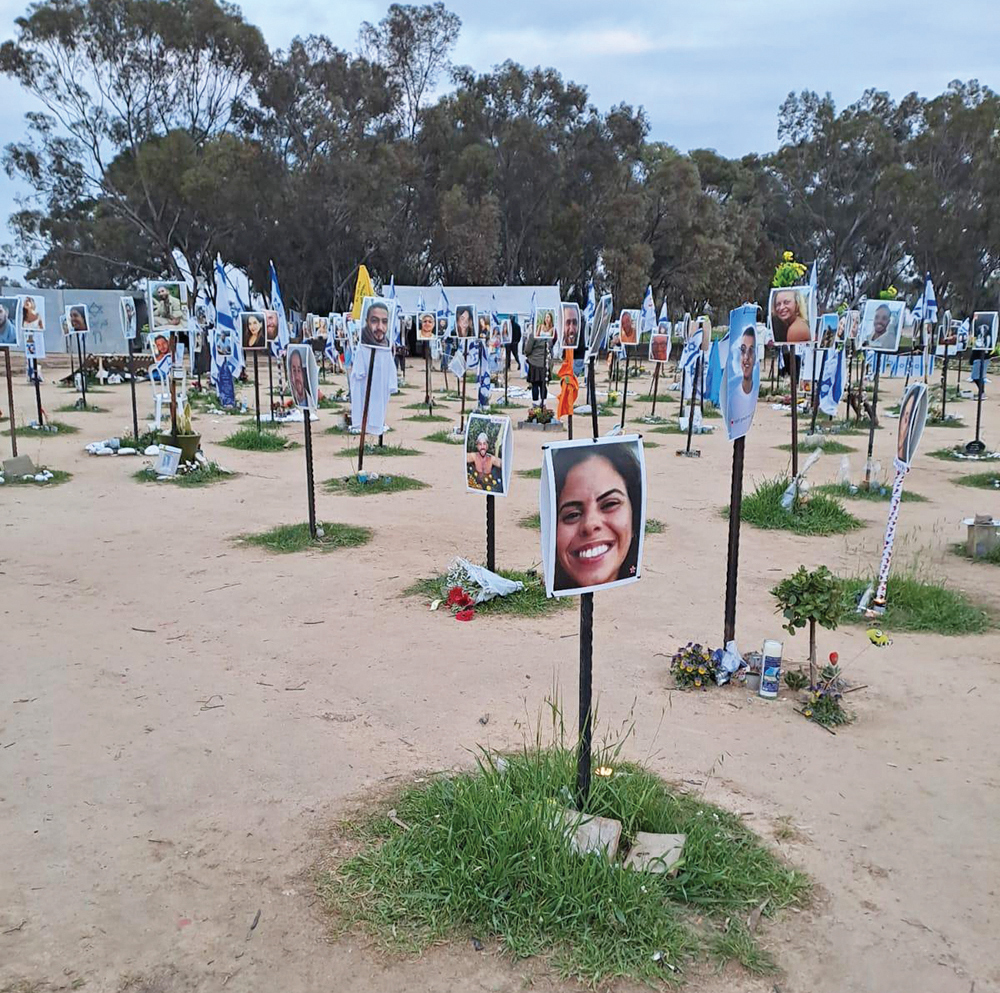
A lot of the places I take people to as a tour guide show the struggles of our people throughout history. In Ir David, we can see remains from the destruction brought about by Nevuchadnezzer when the Babylonians destroyed the first Beit Hamikdash. We can walk in underground tunnels where the Jews hid from the Romans after the destruction of the second Beit Hamikdash. On Masada we learn about the defeat of the last Jewish stronghold against the Romans. Nevertheless, a visit to the sites of destruction in our land that happened only a few months ago is a powerful and heart-wrenching experience.
I recently participated in a trip for tour guides to Otef Azza, the Gaza Envelope, to visit some of the sights of the October 7 massacre. Let me share with you my experience.
We arrived at Kibbutz Be’eri on a beautiful day. The sun was shining and the sky was clear and blue. The entrance to the kibbutz exhibited displays about its founding. It was hard to imagine that this serene and beautiful place had just been the site of such atrocities. As we came closer to the homes of the kibbutz, we could get an idea of what a beautiful place to live this must have been, as well as the clear evidence of the destruction. The place looked abandoned and many of the homes were either completely burned or destroyed. As a guide, I’m used to walking through ruins and learning about the people who once lived there. But usually that’s 2,000 years ago. Here, families flourished only six months ago. We could still see broken glass shattered all over, books on the floor, dishes and family pictures.

We were met by a member of the kibbutz who took us to her home. Before we entered, she pointed to a marking on the outside wall of the home. A circle with a dot in it. That’s from Zaka, she explained to us. It says that this home has been cleaned of human remains. (There were many such markings on the homes throughout the kibbutz. Every home had to be checked carefully and all human limbs had to be brought to burial.) Inside the home, we saw bullets scattered on the floor and bullet holes in the walls and doors. She described to us her experience of waking up to the sirens and hiding with her husband and three children in the sealed room. She explained how she tried to keep her kids calm as though nothing was wrong while at the same time the community WhatsApp was sharing her friends’ reports of terrorists in their homes and family members being shot. She has a dog and believes it was the dog’s barking that scared the terrorists out of her home. She was ultimately rescued after about 10 hours by the IDF. Many of her friends were not so fortunate.
She took us around the kibbutz to show us other homes where people were murdered or taken hostage. Each home has a story. We saw the completely burned home of her friend whose husband and baby were shot and killed. “They had two boys and waited a long time for this baby girl,” she told us. “They only had her a few months before she was killed.”
After our visit to Be’eri, we went to Sderot and met with members of the local municipality. They described and showed us footage from the terrorist infiltration into the city. We also spoke with a member of the IDF who was called to the scene. She spoke about the resilience of the people of Sderot. Many are already moving back. Businesses and stores are opening.
Our next stop was to the “car graveyard” in Tekumah. It was here that the cars in which people were massacred on the roads were collected and cleaned. We were met there by a member of the IDF who was involved in the process. He first warned us that this place still is halachically considered a cemetery, so Kohanim shouldn’t enter. Once inside, we saw piles of cars that had been completely burned and destroyed. We were taught how archeologists from the Israel Antiquities Authority were brought in to sift through ashes and bring any human remains to burial. This actually enabled them to establish the death of seven missing people. We were shown the body bags used to collect the ashes and human remains and bring them to proper burial. After each car was purified, a sticker was placed on it by Zaka.
As I write these words, they feel so cold and raw. All of these cars had people in them. People who were shot and burned in their cars here in the Land of Israel—in 2023. It seems like this should be part of a history lesson, but it’s a very recent part. It’s the continuation of the struggle of our people that is still with us in modern times. In every generation, they rise up against us to annihilate us. (Pesach Haggadah).

We finished our day with a visit to the Re’im forest, the site of the Nova festival massacre. The site has been cleaned and is now full of pictures of those taken captive or killed. Trees were also planted there this past Tu B’Shevat in memory of each victim. I walked through and looked at these smiling young faces that were so brutally murdered. This is why we cry.
This is the story of our people. The world hasn’t changed much in thousands of years. May God give us the strength to eradicate our enemies and herald in a time where God will erase the tears from all faces. (Yeshayahu 25:8).
Hava Preil is an enthusiastic licensed Israeli Tour Guide. She grew up on the Upper West Side of Manhattan and holds an MA in Judaic studies. Hava has developed and taught accredited courses in Tanach and Jewish ethics for Naaleh/Woodmont College and Cybersem. She currently lives in Givat Ze’ev, Israel with her family. Hava can be reached at IL:054-844-1579, USA: 845-391-0438 or at [email protected]. Visit her new website Home-Hava Preil Tours, havapreiltours.com. Hava is currently offering virtual tours of various sites in Israel—a perfect activity for your school, synagogue, or youth group.












